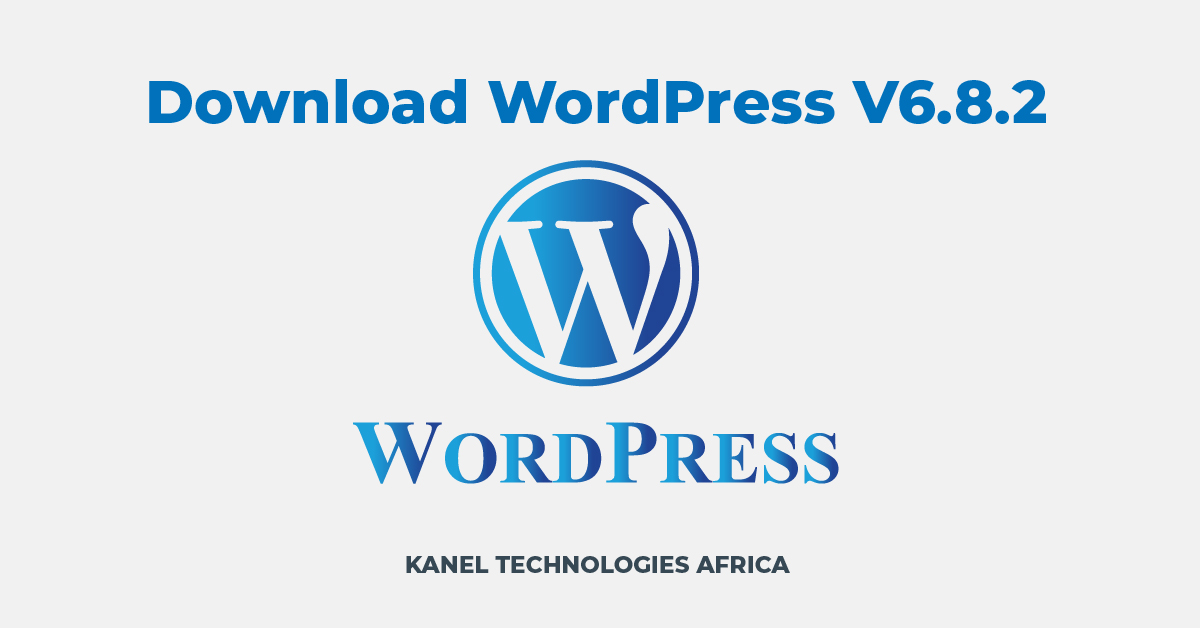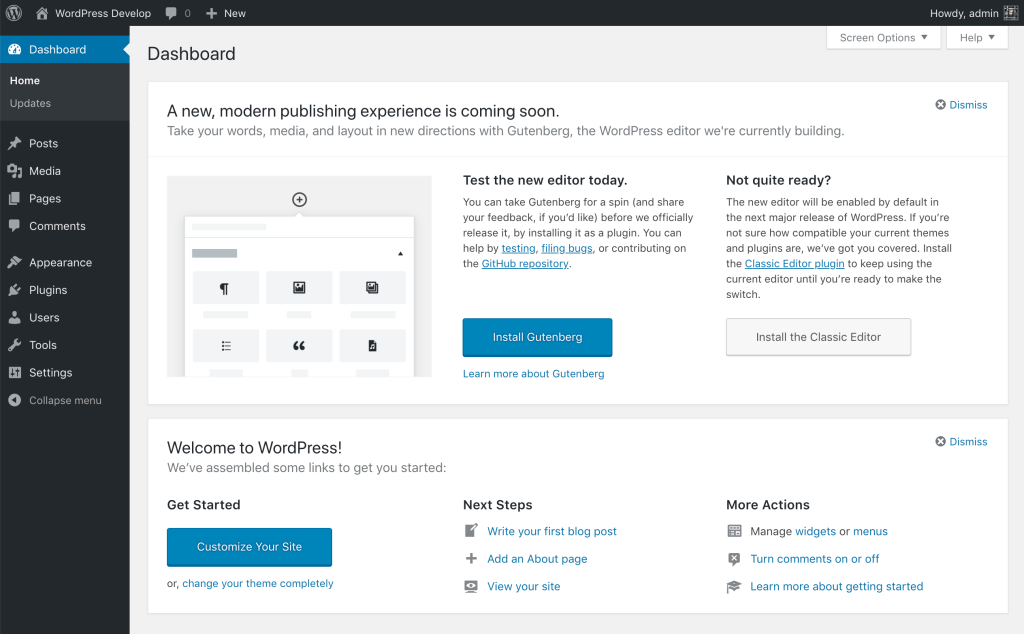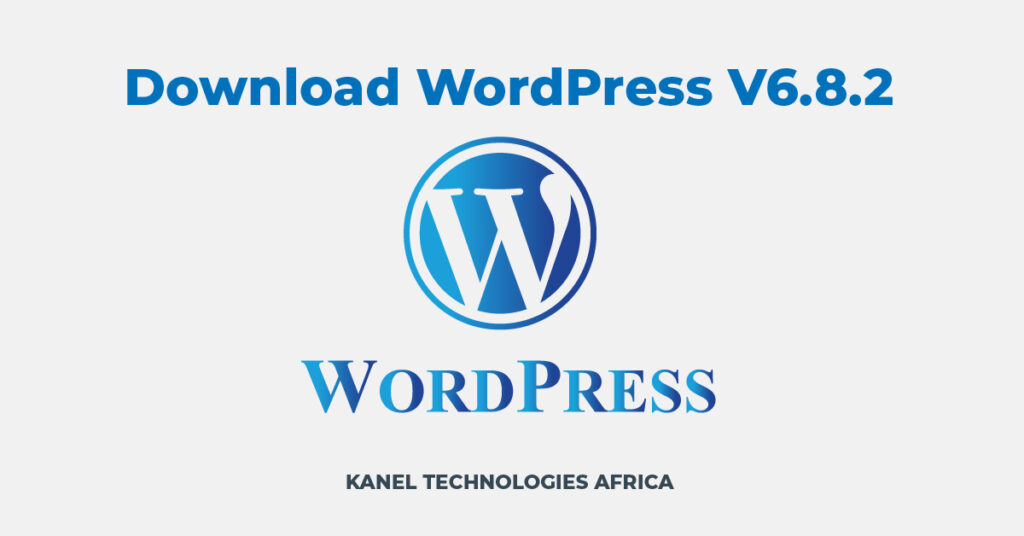
WordPress 6.8.2 enhances stability with 35 fixes, improves block editor reliability, and retires outdated versions. Essential update for security.
Download WordPress Version 6.8.2
WordPress continues its tradition of incremental improvements and careful refinement with the release of version 6.8.2. This is a maintenance (or short-cycle) release that primarily addresses bugs, regressions, and stability issues discovered after the 6.8.0 launch (and the subsequent 6.8.1 update). While it does not introduce large new features, 6.8.2 is an important release for site owners, developers, and agencies who want to ensure their WordPress environments remain secure, performant, and reliable.
In this post, we’ll explore the background and context of WordPress 6.8.x, dive into what 6.8.2 brings, highlight key improvements over 6.8.1, examine developer-level changes, and offer best practices for updating safely.
Context: WordPress 6.8 and the 6.8.x Track
When WordPress 6.8 was released, the focus was on refining existing workflows rather than introducing revolutionary new features. The update brought enhancements in the block editor, better site styling tools, performance optimizations, and improved usability for both classic and block themes.
Shortly thereafter, 6.8.1 was issued as a maintenance update, mainly resolving bugs, regressions, and plugin/compatibility issues that arose soon after 6.8’s release. That set the stage for 6.8.2, which further polishes the platform and addresses remaining issues.
6.8.2 is a short-cycle maintenance release that includes 20 core fixes and 15 Block Editor fixes. It was led by contributors from the global WordPress community. Importantly, as of this version, WordPress also officially ends security support for versions 4.1 through 4.6.

What’s New in WordPress 6.8.2
Because 6.8.2 is a maintenance release, its changes are mostly under the hood. However, several fixes can have visible impact or prevent troublesome regressions.
Core Fixes (20)
Some of the notable fixes in the core include:
- Editor styling consistency in the Twenty Twenty-Five theme: now the editor styles load correctly, so what you see in the editor matches the front-end more reliably.
- Image attribute handling: a long-standing issue related to
wp_get_attachment_image_attributeswas resolved, improving control over image markup and reducing layout shifts. - macOS upload file-name issues: filenames with special characters that could break on macOS uploads have been sanitized or adjusted.
- Performance and stability tweaks: caching adjustments, compatibility with newer PHP versions, and internal reliability improvements.
Block Editor Fixes (15)
Within the block (Gutenberg) editor, improvements include:
- Better handling of global styles and
theme.jsonmerges, preventing occasional style inconsistencies. - Smoothing out editor glitches (alignment, block spacing, preview mismatches) for a more stable authoring experience.
- Fixes related to query loop behaviors, navigation blocks, and block interactions where regressions were reported.
Overall, 6.8.2 cleans up stray bugs, ensures better continuity between editor and front-end, and hardens the environment for both content creators and developers.
Comparison Table: 6.8.2 vs 6.8.1
Below is a side-by-side comparison of key metrics and changes between WordPress 6.8.2 and 6.8.1:
| Feature / Area | WordPress 6.8.1 | WordPress 6.8.2 |
|---|---|---|
| Release type | Maintenance / bugfix release after 6.8 | Maintenance / bugfix release after 6.8.1 |
| Number of fixes | About 15 (Core + Block Editor) | 35 total — 20 Core, 15 Block Editor |
| Focus | Fix regressions, improve plugin compatibility, REST API tweaks | Further stability, editor polish, resolve deeper regressions and edge cases |
| New features | None — purely maintenance | None — maintenance only |
| Backward legacy support changes | No major deprecations | Ends security updates for WordPress 4.1–4.6 |
| Developer-level updates | Minor bug corrections, compatibility fixes | More adjustments in image API, theme JSON handling, internal stability |
| Upgrade urgency | Recommended for stability after 6.8 | Strongly recommended, especially for sites sensitive to editor bugs or regressions |
From the table, you can see that 6.8.2 builds on the foundation of 6.8.1 by resolving additional edge issues and reinforcing long-term stability.
Why 6.8.2 Matters: Benefits to Site Owners & Developers
Stability & Bug Mitigation
Many users and plugin developers likely discovered regressions or oddities after 6.8 or 6.8.1. 6.8.2 helps plug those gaps, smoothing out editor behavior and improving consistency between backend and frontend.
Editor & UX Improvements
Because some of the fixes specifically target block editor glitches, authors and site editors should notice fewer weird behaviors (misaligned blocks, preview mismatches, styling inconsistencies) over time.
Security & Long-Term Maintenance
Although 6.8.2 is not branded primarily as a security release, keeping up with maintenance versions helps reduce the overall risk surface. Further, the removal of support for WordPress 4.1–4.6 pushes sites using extremely outdated versions to upgrade, which is critical for maintaining baseline security across the ecosystem.
Developer Confidence & Ecosystem Compatibility
Plugin and theme developers can rely on 6.8.2 as a more stable, regression-reduced baseline. It reduces the chances that new installs will hit minor bugs, especially edge-case behavior or environment discrepancies (e.g. with newer PHP versions).
Performance Continuity
While 6.8 had a number of performance enhancements, 6.8.2 ensures those gains are not undermined by regressions or unstable code paths. Fixing regressions helps ensure that performance gains remain consistent across installations and don’t degrade due to unhandled edge bugs.
Developer & Technical Highlights in 6.8.x Series
Although 6.8.2 itself doesn’t introduce bold new APIs, the overall 6.8+ series includes several advancements worth noting:
- Speculation Rules / speculative loading: WordPress 6.8 integrates the Speculation Rules API to allow resource prefetching or prerendering, improving perceived loading speed.
- bcrypt for password hashing: With 6.8, WordPress switches from the older phpass algorithm to bcrypt for more secure password storage. Users’ passwords are rehashed the next time they log in.
- Multiple block registration by metadata: Developers can now register multiple block types via a collection manifest, simplifying workflows in plugin development.
- UI component deprecations and replacements: Some earlier components (e.g.
Navigation) are being deprecated in favor of more modern counterparts (Navigator). - New performance warnings: In development mode, inefficient
useSelecthook usage now triggers warnings to alert developers to potential bottlenecks. - Interactivity API groundwork: Future improvements to asynchronous handlers and better interaction responsiveness are being laid out as part of the roadmap.
These underlying advancements provide the scaffolding for a more modern, performant, and maintainable WordPress core — something 6.8.2 helps to stabilize.
How to Safely Update to WordPress 6.8.2
Given that 6.8.2 is a maintenance upgrade, the update process is straightforward — but best practices remain important to avoid issues. Here’s a recommended update checklist:
- Full Backup (files + database)
Always back up your entire site before making any update. - Test in staging / local environment
Try the update first in a staging or local copy of your site, especially if you run e-commerce or membership platforms. - Check plugin & theme compatibility
Confirm that your active themes and plugins are ready for 6.8.x. Update them before or after WordPress core (depending on your workflow). - Trigger core update
- Via Dashboard: go to Dashboard → Updates, then click “Update Now.”
- Via WP-CLI:
wp core update.
- Clear caches
After update, clear any plugin caches, CDN caches, and browser caches. - Spot-check key pages and functionality
Test your homepage, blog pages, login, forms, and editing workflows. - Monitor logs and performance
Watch PHP/server logs and monitor site speed and behavior. - Have a rollback plan
Be ready to restore from backup if anything goes wrong.
Potential Caveats and Known Issues
- Some plugins or themes may not yet be fully tested against 6.8.2, especially those with deep block editor customizations.
- Sites running very old WordPress versions (4.x) must migrate fully before updating. The end of support for 4.1–4.6 means those branches will no longer receive updates.
- Hosting environments with strict file permission or PHP constraints may encounter issues during automatic updates.

WordPress 6.8.2 may not be a flashy major release, but it’s a crucial one. It addresses 35 bug fix tickets (20 in the core and 15 in the block editor), smooths out regressions, and reinforces editor stability. For any site already on 6.8 or 6.8.1, upgrading to 6.8.2 is highly advisable to maintain reliability, avoid edge-case issues, and stay aligned with the most stable baseline.
As with any update, proceed carefully: backup, stage, test plugins/themes, and monitor after updating. Over time, the 6.8.x series (with features like speculative loading, bcrypt, and enhanced developer APIs) will provide a stronger foundation for building fast, secure, and modern WordPress sites.

